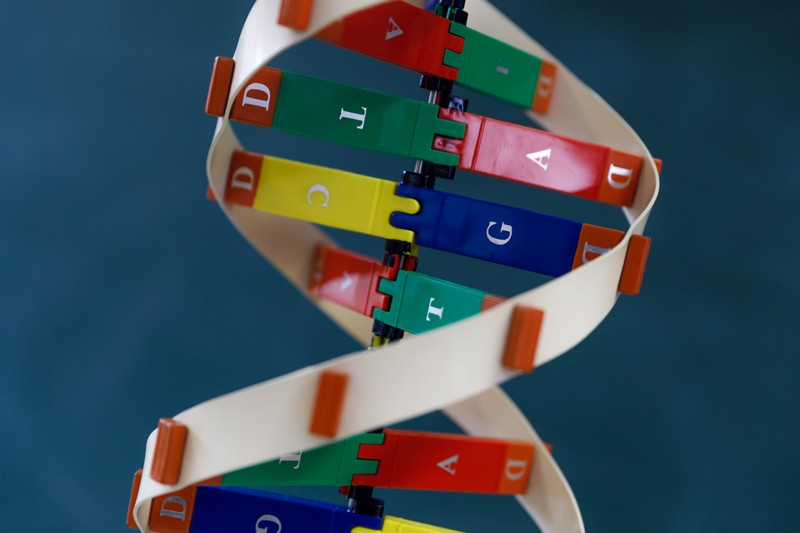07/18/2022
CRISPR 'cousin' put to the test in landmark heart-disease trial

Base editing could edit genomes like CRISPR, but with less potential for unwanted effects.Credit: Martin Steinthaler/Getty
It’s test time for CRISPR’s cousin.
A clinical trial that recently treated its first participant will test whether base-editing — a genome-editing method related to the CRISPR–Cas9 system — can safely be used to make precise, single-letter changes to a DNA sequence in a cholesterol-regulating gene without breaking both strands of DNA first, as CRISPR–Cas9 would do.
This study will be followed by another base-editing trial, slated to treat its first participant later this year, that will aim to treat sickle-cell disease, a genetic blood disorder.
Both tests are expected to report results in 2023, and further base-editing treatments are working their way through the pipeline towards clinical trials. “It’s very exciting that the first clinical trials are starting, with CRISPR–Cas9 and now also with base editing,” says Gerald Schwank, who studies the use of genome editing to treat diseases at the University of Zurich, Switzerland. “We’ve got a lot to learn.”
In CRISPR–Cas9 genome editing, the Cas9 enzyme breaks both strands of DNA at the site that is to be edited. The cell’s DNA-repair processes stitch the strands back together, but sometimes make mistakes. This means that a range of DNA sequence changes are possible with each edit.
Base editing, by contrast, avoids cutting both strands of the DNA by coupling a Cas9 protein that only cuts one strand of DNA, rather than both strands, to another enzyme that chemically converts one DNA letter to another. The Cas9 directs the base-editing enzyme to the right location in the genome; the other enzyme then acts on that site, ideally producing only one edit.
This level of precision has spurred hopes that the technique could provide safer and more controllable therapies for genetic diseases than is possible with CRISPR–Cas9. Since base editing was first developed, in 2016, multiple base editors have been designed to alter DNA in different ways, with improved efficiency and lower chances of introducing unwanted genetic changes.
Lower cholesterol
The trial announced this week will use a base editor to convert an adenine base (A) to a guanine one (G) in the DNA encoding a protein called PCSK9, a key regulator of blood cholesterol levels. The approach, developed by Verve Therapeutics in Cambridge, Massachusetts, aims to reduce the amount of functional PCSK9 in people with a condition called heterozygous familial hypercholesterolaemia, which causes high cholesterol and can lead to heart disease. Disabling PCSK9 has been shown to reduce cholesterol levels and cut the risk of heart disease, and several therapies already on the market reduce PCSK9 activity.
“It could be very promising,” says Piter Bosma, who studies liver diseases at the Amsterdam University Medical Centers. Bosma points to preclinical results in macaques (Macaca fascicularis) published last year, which showed that the treatment reduced blood levels of PCSK9 by 81% and lowered blood cholesterol levels with no apparent harmful side effects1. Another study in macaques by Schwank and his colleagues also found that the treatment was safe2.
Although cautiously optimistic, researchers will be looking to see whether the treatment introduces any off-target genetic changes. The risk of these side effects might be balanced by the benefit of treatment for people with severely high cholesterol levels, but researchers will need long-term safety data before feeling assured that the treatment can be used more widely. “Maybe we will know that many years from now, but not for the time being,” says Bosma.
In and out
The Verve trial aims to edit cells directly in the body. The team has encased the base-editing components — messenger RNA encoding the enzyme needed to alter DNA, and an extra snippet of RNA that will direct the enzymes to the correct location — in lipid nanoparticles, similar to those used in the formulation of mRNA COVID-19 vaccines. The nanoparticles will be concentrated in the liver, a key site ofPCSK9 is production.
By contrast, the upcoming sickle-cell trial will use base editing to alter DNA in blood stem cells that have been removed from the body. The edited cells will then be reinfused into participants. The trial will be conducted by Beam Therapeutics, also based in Cambridge, which collaborated with Verve to develop the cholesterol base-editing therapy.
Other base-editing therapies are being developed to treat conditions such as leukaemia; a rare metabolic condition called glycogen storage disease; and Stargardt’s disease, which can cause blindness. And other CRISPR-derived approaches are being readied for their own foray into the clinic. Alternative Cas enzymes have been discovered that can edit RNA rather than DNA. Schwank says that his lab has mostly moved on from base editing, to a technique called prime editing, which offers more precision: “It’s all moving fast.”
doi: https://doi.org/10.1038/d41586-022-01951-1
